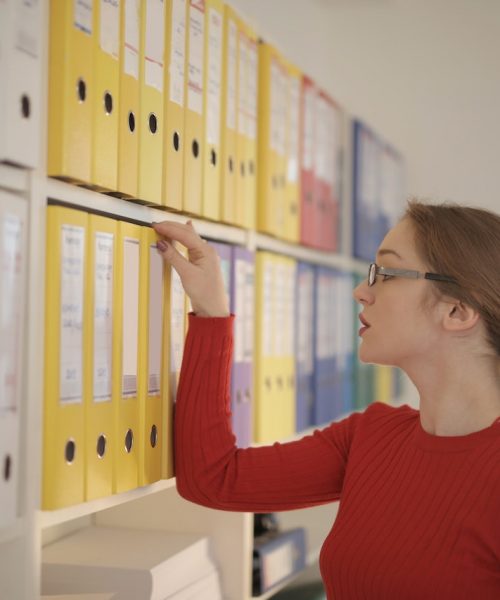There are two ways to file Sole-proprietorship Tax returns in Canada. One option is to file Form 5471 and include it with your personal income tax return. If you’re a non-resident, the benefit is that you’ll only be required to pay 9% more tax than if you were a Canadian-controlled corporation.
Form 5471
Unlike Form 1120, Form 5471 requires an individual to present financial data on a balance sheet in U.S. dollars, including income statements and tax payments. This form also requires the presentation of certain foreign assets and liabilities on a straight-line basis. The IRS is strictly enforcing its reporting requirements and regularly issues penalties for failure to comply.
The penalties for not filing Form 5471 start at $10,000 and increase based on the number of years a return is late and the circumstances. There is also a separate form called Form 5472 for foreign persons with an interest in US corporations. It starts at a $10,000 penalty and increases to a $25,000 minimum penalty after several years.
Form 5471 is generally four pages long, but it can extend to six or seven pages if additional schedules are filed. The information reported on Form 5471 depends on the type of income generated by the business. Among the main types of income are rental income, subpart F income, insurance income, offshore shipping income, and personal service income. The rules relating to these are complex. If you are an individual generating income from a sole-proprietorship, it may be a good idea to consult with a tax advisor.
In the United States, Form 5471 is required if you own 10% or more of the company. This form is also necessary if you have more than one shareholder based in the U.S. It is important to remember that there are some exceptions to this rule, so it’s best to consult with a tax professional if you have any questions or need more information.
Foreign corporations also need to file Form 5471, and shareholders of these companies must file Form 5471. If you have more than one foreign subsidiary, Form 5471 is required to include certain information. This includes the dividends received from foreign companies, which may be subject to U.S. shareholders’ current taxes. The income from these corporations is also taxable.
Filing Form 5471 can be a challenging process for a sole-proprietorship, but it’s important to avoid making mistakes when filing. The IRS has made it clear that they will levy substantial penalties for non-filing or not filing Form 5471 on time. The IRS requires the information on Form 5471, as well as information from the other owners, to determine the owner’s tax liability.
Rates
If you are running a sole-proprietorship in Canada, you need to pay taxes every year. There are two methods for calculating these taxes: the net profit method and the cost method. There are also special circumstances that may allow you to defer taxes on the sale of your business. For example, if you are an investor and receive $20,000 in dividends or $80,000 in capital gains, you can elect to defer paying these taxes until April 30, 2020.
If your business generates more than $30,000 in revenue per year, you might need a business number with the federal government. In this case, you are also required to pay sales tax, which applies if you make over $30,000 per year. You may also need to obtain permits from different government agencies. A useful tool for this is BizPal, a platform developed by various governments in Canada. It will help you determine what permits and licenses you need to operate your business. This platform will also allow you to apply for a business bank account for your business.
If you are self-employed, you will have to pay self-employment taxes based on your earnings. These taxes are 15.3% of your total income. The amount that you pay will be reported on your personal income tax return, as a self-employed individual. However, if you are a partner in a partnership, you can also claim a percentage of profits equal to your share of the partnership. For example, a 50/50 partnership would have 50% of the business income and 50% of the expenses.
If your business does not employ a third party, you will also need to report your income to the CRA. Generally, sole-proprietorships start out as freelance projects, but if you have a full-time employee, you will need to report your business income on Form T1 (General Income Tax and Benefits Return). Your gross fees are considered your business income.
The higher the income, the higher your tax rate. In Canada, it is common for a sole proprietorship to overlap personal life. Consequently, it is important to remember that a sole-proprietorship is a business that needs to be profitable to deduct taxes. In addition, a sole proprietorship must keep records of its expenses and revenues.
Planning considerations
As a sole proprietor, you have to pay taxes on your income and expenses. The amount you pay depends on how much you make, but there are ways to reduce it. One way is to use your start-up losses against your other personal income. Another way is to take advantage of income splitting opportunities. The best way to reduce your taxes is to plan your finances and your financial affairs so that you minimize your tax burden.
First, you need to understand the tax implications of operating as a corporation or partnership. The tax implications of each structure will differ. In Canada, corporations are taxed differently from sole proprietorships. A corporation will have to file an income tax and payroll tax returns separately from an individual’s personal income tax returns.
For businesses that generate more than $30,000 in annual revenue, you may need a business number with the federal government. If you employ people, you may have to pay sales tax. You may also need permits and licenses from various government agencies. BizPal, a platform set up by several Canadian governments, can help you with this process. Using this platform, you can access CRA programs and apply for business bank accounts.
If you are looking to incorporate, you may wish to consult with a qualified tax advisor. By incorporating your practice, you will be able to take advantage of income splitting opportunities. You may be able to pay dividends to lower-income family members and still enjoy the benefits of lower marginal tax rates. However, you should note that this strategy might not be suitable for all practices.
Another way to avoid paying taxes on sole-proprietorship income is to incorporate your business as a small private corporation. Incorporating your business in Canada may allow you to retain some of your earnings and reinvest them. This way, you can reap the best tax benefits for your business. However, you must remember that you may have to withdraw these funds eventually, which will trigger your personal income taxes.
While a sole proprietorship allows for more flexibility and tax benefits than a corporation, there are additional costs and reporting requirements. You may need to register your business for payroll taxes and GST.
Filing with personal income tax return
Filing your tax returns can be challenging. However, filing them online can be a simpler alternative. You can complete the T2125 online using a tax filing software that guides you through the process. You can also consult a tax professional who will help you with your tax return.
In Canada, you must file your personal income tax return on time. The deadline is April 30th. If you file late, you will incur a late filing penalty. Delay in filing your tax return can also affect the amount of GST/HST you can claim, the Climate Action Tax Credit you may be eligible for, and payments you may receive from the Canada Child Benefit, Family Bonus, and Old Age Security. It is also important to remember that your business’ tax return needs to be filed by June 15th. You should also pay any balance owing by that date.
When it comes to preparing your tax return, make sure to keep receipts and other relevant information. This is crucial to maximize tax deductions and minimize taxes owed. You will need these items to properly document your business’ expenses and profits.
You will also need to file Form T1 General Form, also known as Income Tax and Benefit Return, and Form T-2125, also known as Statement of Business Activities. It’s important to note that your tax amount will vary by province, so make sure you check your province’s tax rate before filing your tax return.
As a sole-proprietor, you must keep separate business and personal financial records. You may be eligible to use a different fiscal period instead of the calendar year. However, you cannot normally defer your taxes. The sole-proprietorship tax is calculated on net business income and revenue generated during a calendar year. Furthermore, you may be required to collect payroll tax and HST.
Sole-proprietorship taxes are different from corporate taxes. A sole-proprietorship pays taxes directly to the owners, while a corporation pays taxes separately. However, in Canada, if you choose to use a corporation as your sole-proprietorship, you’ll pay tax on the net profits of the business.





























